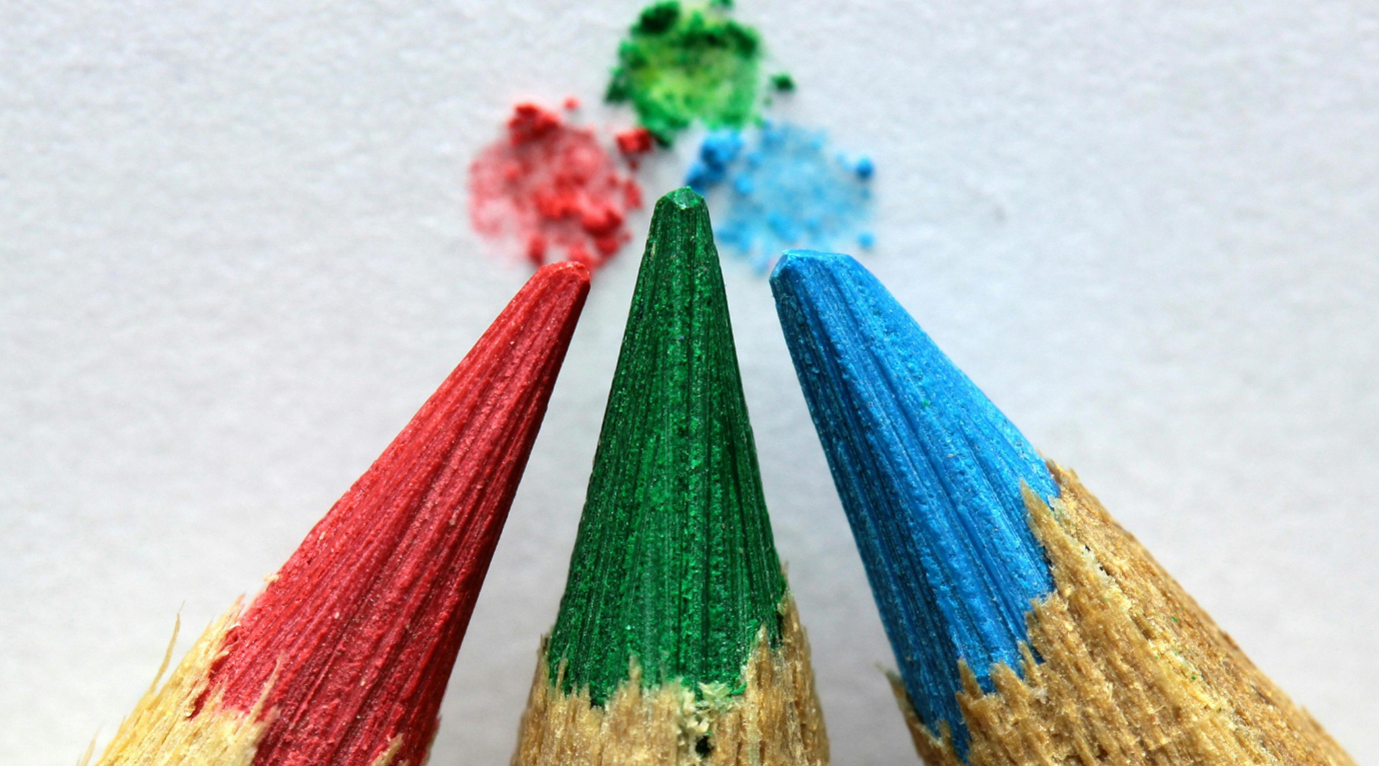Triadic Color Scheme: A Thoughtful Approach to Design

The Power of Colors in Design
Did you know that over 60% of consumers make decisions based on color alone? (Source: CCICOLOR – Institute for Color Research) It’s not just about aesthetics; colors shape perceptions, evoke emotions, and build connections. Whether it’s the vibrant red of Coca-Cola or the soothing green of Starbucks, colors play a pivotal role in defining a brand’s identity. One of the most versatile and impactful methods to harness the power of colors in design is the triadic color scheme, a technique rooted in color theory and celebrated for its balance and vibrancy.
In this article, we’ll explore what a triadic color scheme is, why it’s a game-changer in design, and how you can use it to create stunning visuals that resonate with your audience. Along the way, we’ll touch upon how professional design services can elevate the process, ensuring optimal results for your brand.
What Is a Triadic Color Scheme and Why Does It Matter?
At its core, a triadic color scheme involves selecting three colors that are evenly spaced around the color wheel. These colors form an equilateral triangle, creating a harmonious yet dynamic palette. Think of the primary colors – red, yellow, and blue – or the secondary hues – green, orange, and purple. By combining these equidistant tones, designers achieve a striking balance of contrast and cohesion.
But why does this matter? In a cluttered digital landscape, where every brand fights for attention, visual harmony can make or break a design. A well-crafted triadic color scheme not only catches the eye but also evokes specific emotions aligned with a brand’s message. For instance:
- Orange conveys energy and enthusiasm.
- Blue symbolizes trust and reliability.
- Green exudes calmness and growth.
When these colors work together, they create a visual language that speaks directly to the audience’s subconscious. This technique has been used by iconic brands like Tide, Airtable, and Nickelodeon, each leveraging the unique characteristics of a triadic color scheme to build their identity.
Another key aspect to understand is the trichromatic color scheme, which works similarly by emphasizing three dominant hues but often involves variations or muted tones. This subtle difference allows for flexibility depending on the mood or context a designer wants to create.
How to Create a Triadic Color Scheme That Works
Designing with a triadic color scheme requires more than just picking three colors from a wheel. It’s a meticulous process that blends art, psychology, and strategic thinking. Here’s a step-by-step guide to mastering this approach:
1.Understand the Color Wheel
The color wheel, developed by Sir Isaac Newton in 1666, is the foundation of color theory. Start by identifying your dominant color based on your project’s purpose – be it trust (blue), creativity (yellow), or passion (red). Remember, the key to a triadic color scheme is spacing: each color must be equidistant from the others.
2.Align Colors With Your Brand’s Purpose
Each color carries emotional weight. Consider a fintech app. Blue might serve as the primary color to convey trust, while muted accents of orange and green could introduce warmth and innovation. By aligning your color choices with your brand values, you create a palette that feels authentic and impactful. Professional services specializing in UX design for startups can assist in achieving this alignment through tailored approaches to brand identity.
3.Test Color Harmony and Contrast
A successful triadic color scheme requires harmony. Use online tools like Adobe Color or Coolors to experiment with saturation and brightness. Also, prioritize accessibility – ensure your colors provide sufficient contrast to make text legible and compliant with accessibility standards. Comprehensive UX audits, for instance, can help ensure these elements work seamlessly to enhance usability.
4.Follow the 60-30-10 Rule
Balance is key. Allocate 60% of your design to the dominant color, 30% to the secondary color, and 10% to an accent color. This proportional approach ensures visual coherence while guiding the viewer’s eye naturally. Enterprise-level design services often implement such rules to enhance large-scale platforms effectively.
5.Mockups and Accessibility Testing
Before committing to a final design, create mockups that test the scheme’s real-world application. Ensure that it resonates with your intended audience and complies with Web Content Accessibility Guidelines (WCAG) for inclusivity. Services that focus on data design can be invaluable here, helping to visualize how color schemes integrate seamlessly into functional user interfaces.
Ready to Elevate Your Design?
Bring your vision to life with innovative, user-centric design solutions.
Let’s CollaborateReal-Life Applications of Triadic Color Schemes
The versatility of the triadic color scheme makes it a favorite across industries. Let’s look at three notable applications:
- Web Design
Brands like Nickelodeon use triadic color schemes to appeal to their target audience. Their dominant orange evokes fun and excitement, while secondary greens and blues add vibrancy and balance. The result? A visually engaging website that captures the essence of their brand. Many service providers in UX and EPX design help brands achieve similar results by tailoring interfaces to enhance both functionality and user satisfaction. - Photography
Triadic schemes bring depth and balance to photographs. Picture a model in a sunny yellow dress against a vibrant red car and a bright blue sky. The interplay of colors creates a captivating composition that draws the viewer’s eye. - Movies
Even cinema relies on the power of triadic color schemes. Take “The Incredible Hulk,” where green, purple, and orange work together to underscore the tension between the character’s monstrous alter ego and the world around him.
These examples showcase the wide-ranging applications of triadic color schemes and their ability to adapt to various contexts.
Addressing Misconceptions About Color Theory
While the triadic color scheme is celebrated for its versatility, many designers shy away from it due to misconceptions. Some believe it’s too bold or challenging to implement, while others think it’s only suitable for artistic projects. However, these myths couldn’t be further from the truth.
- Myth 1: Triadic schemes are too vibrant.
Truth: With careful adjustments to saturation and tone, triadic palettes can be subtle and sophisticated, making them ideal for corporate branding or minimalist designs. - Myth 2: They’re not user-friendly.
Truth: A well-balanced triadic color scheme enhances usability by creating visual hierarchy and guiding the user’s attention.
Similarly, the trichromatic color scheme, often misunderstood as overly technical, can offer designers an alternative approach to working with three hues. By experimenting with muted or pastel tones, this method allows for flexibility while maintaining balance.
Professional service design teams can address these misconceptions by offering customized strategies to integrate triadic or trichromatic schemes effectively into any project, ensuring both aesthetic appeal and user engagement.
The Role of Expertise in Design
Designing with a trichromatic color scheme or triadic color scheme isn’t just about theory – it’s about execution. This is where expertise and experience come into play. When working on complex projects, having a partner who understands the nuances of color theory, user behavior, and brand identity can make all the difference. From creating engaging websites to crafting impactful marketing collateral, experienced teams ensure your visuals are both stunning and strategic.
Services that specialize in enhancing AI experiences with user-centric designs or refining enterprise platforms for peak usability can help businesses leverage triadic schemes to deliver consistent and memorable designs. By applying agile frameworks, such teams ensure rapid innovation and scalable solutions that align perfectly with organizational goals.
The Takeaway
The triadic color scheme is a powerful tool for creating harmonious, vibrant, and memorable designs. By understanding color theory, aligning your palette with your brand’s purpose, and leveraging tools and frameworks, you can craft visuals that leave a lasting impression. Whether you’re designing for a website, a marketing campaign, or a cinematic masterpiece, the principles of the triadic approach offer endless possibilities.
At Neuro Interactive, we specialize in transforming complex ideas into visually stunning designs. Our expertise in applying techniques like the triadic color scheme ensures your brand stands out in today’s competitive landscape. Ready to bring your vision to life? Let’s make it happen.
 Back
Back



